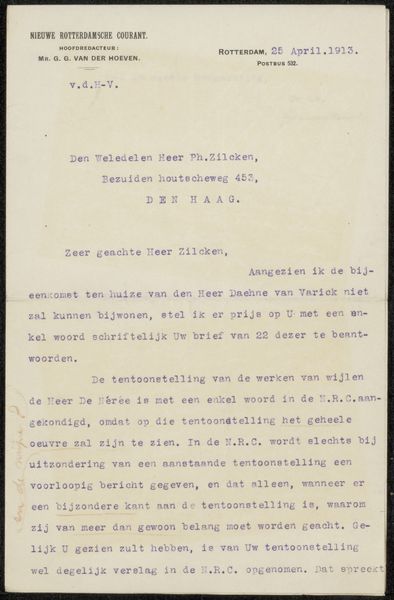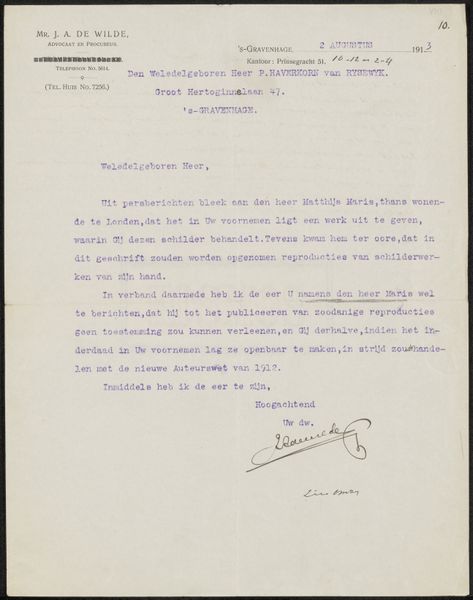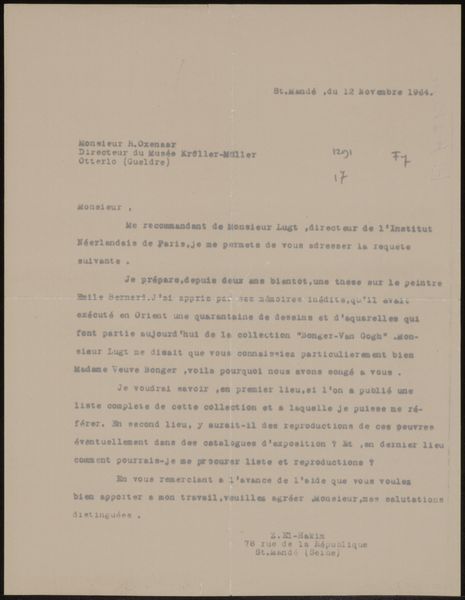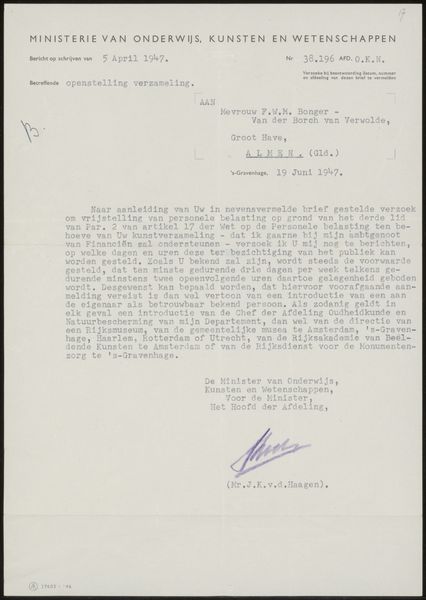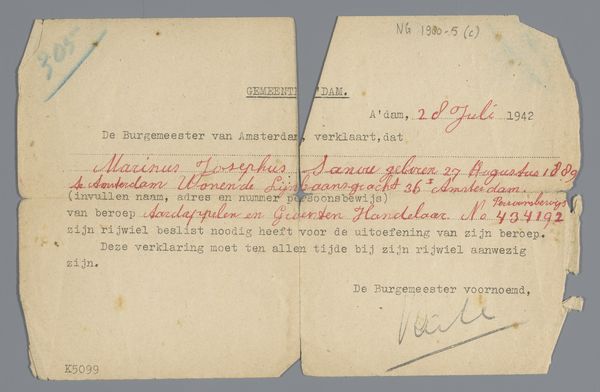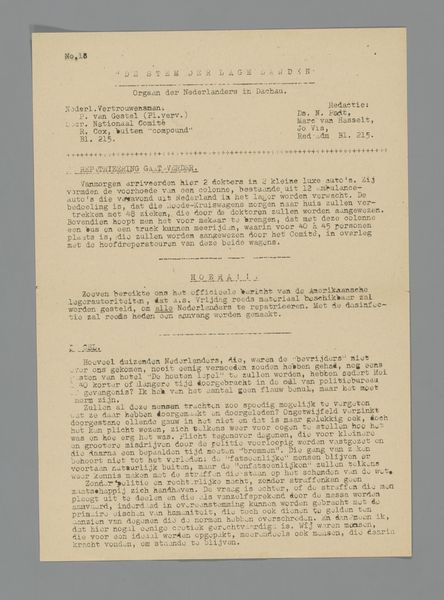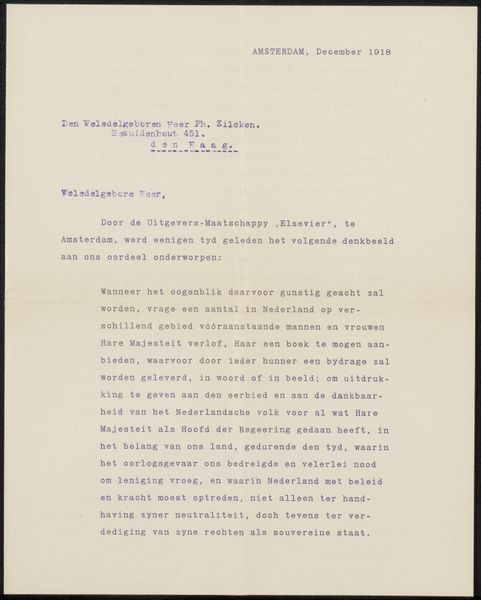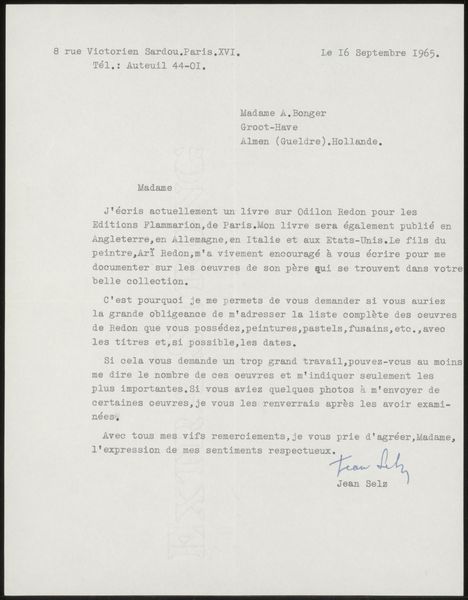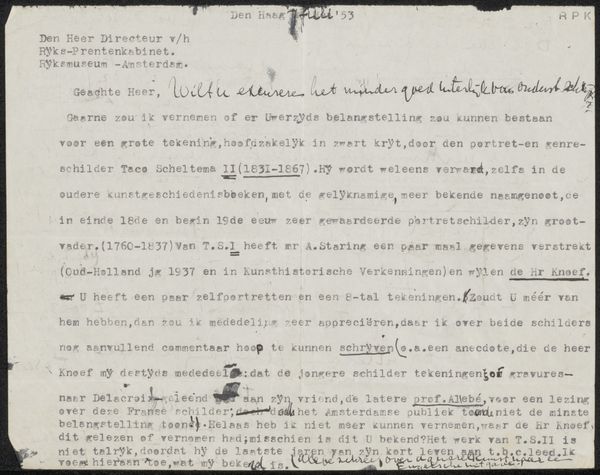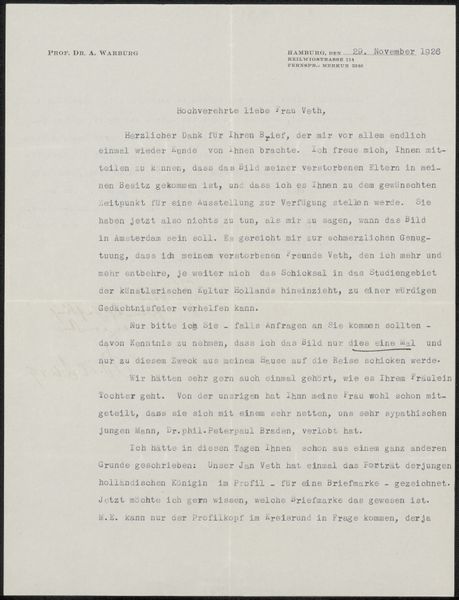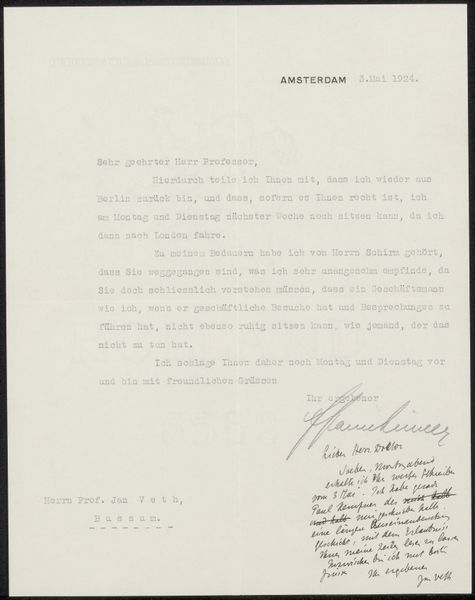
paper, photography, collotype
#
dutch-golden-age
#
paper
#
social-realism
#
archive photography
#
photography
#
collotype
Dimensions: height 17.1 cm, width 21.3 cm
Copyright: Rijks Museum: Open Domain
Curator: Let's discuss "Document gericht aan M.J. Sanou," a collotype on paper that likely dates to 1943, originating from the Centrale Dienst voor de Levensmiddelenvoorziening, or the Central Food Supply Service. Editor: It strikes me as stark and utilitarian. The document's typewritten text, the stark bureaucratic language, and the single reddish signature—there’s an inherent formality to it all. Curator: Absolutely. Consider the composition—the letterhead is carefully positioned at the top, creating a visual hierarchy with the formal address. Below this, the body text employs crisp, standardized typeface. This organization enhances its clarity as a mode of communication. Editor: But the starkness is deceptive. A request for payment within a bureaucratic context points to wartime conditions. This is about rationing. Potatoes! A seemingly mundane commodity transformed into a signifier of scarcity, control, and survival. Curator: You highlight the societal impact effectively. However, even the collotype medium choices underline specific historical functions. The use of standardized fonts indicates functionality, devoid of personal expression—it conveys authority efficiently. Editor: But consider the addressee, M.J. Sanou. A single individual navigating the state apparatus, attempting to secure potatoes—food—amidst global conflict. Doesn’t the collotype itself then act as evidence of the power dynamics at play? Curator: I concur that the stark materiality, juxtaposed against the socio-political backdrop, produces an inescapable tension that cannot be resolved with aesthetic arguments alone. Editor: Exactly. This simple piece of paper is loaded with information, class struggle, and cultural trauma. Food during wartime—its production, distribution, and consumption—became deeply politicized. What might the collotype further tell us? Curator: A stimulating approach! Looking again at the spatial arrangements, one recognizes the historical pressures of production placed by a specific temporal condition. Editor: I see this not merely as formal bureaucratic evidence. Its semiotic impact derives power precisely from how the piece intersects the realms of personal agency, war, and bureaucracy. Curator: Thank you for expanding my perspective on how the document and its time become material. Editor: A fitting material ending to our exploration.
Comments
No comments
Be the first to comment and join the conversation on the ultimate creative platform.
